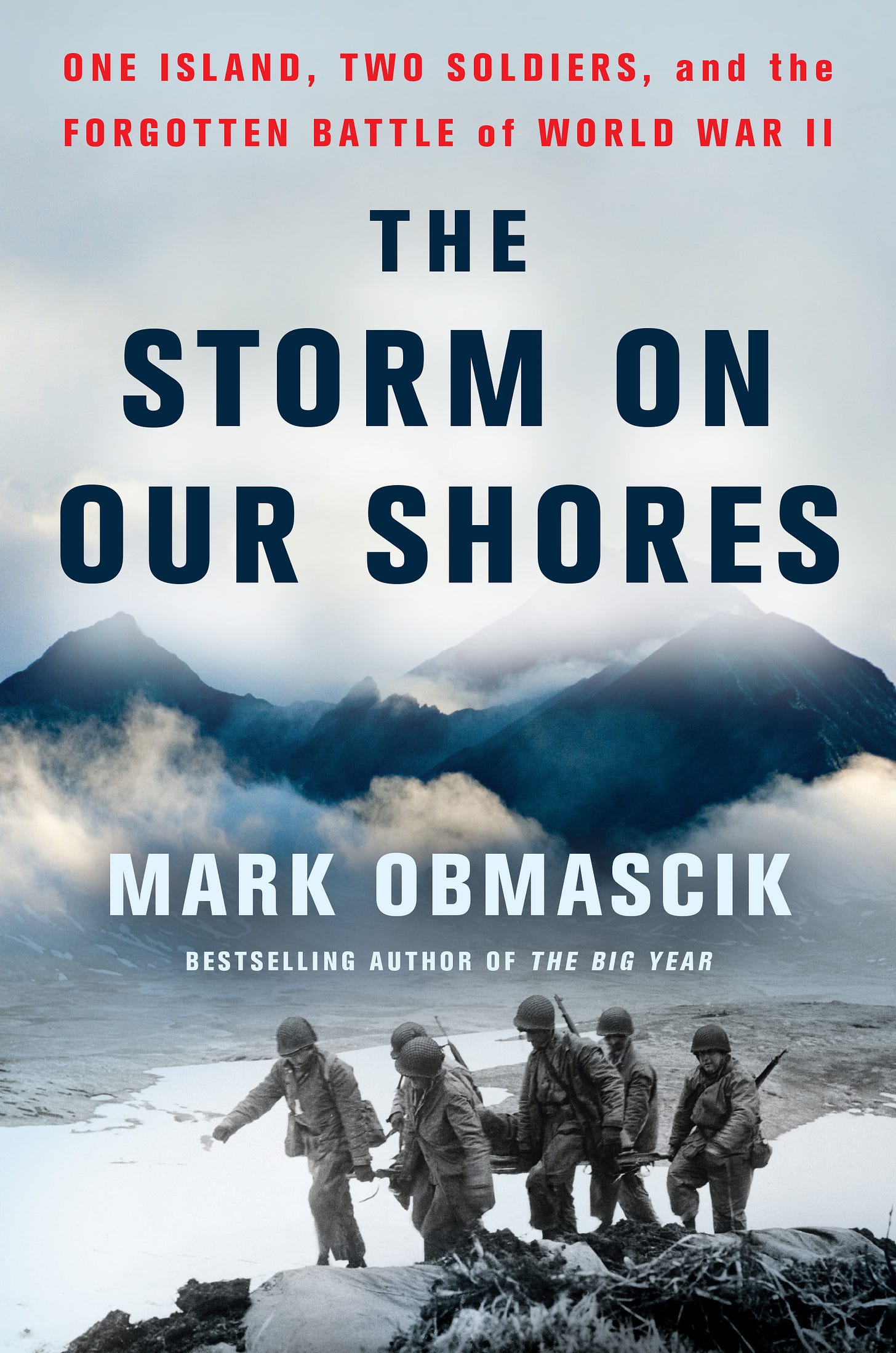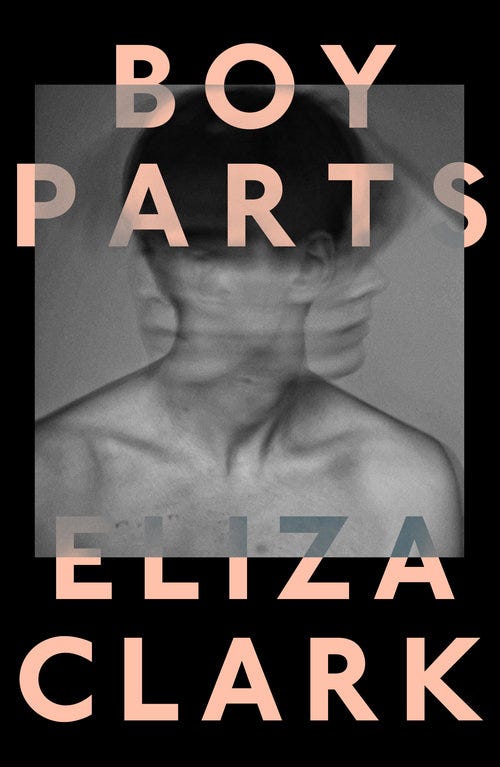Good afternoon!
I read two narrative nonfiction books this past week — In the Heart of the Sea (the inspiration for Moby-Dick) and The Storm on Our Shores (set in Alaska during World War II) — and Eliza Clark’s debut novel, Boy Parts. Let’s get into it.
In the Heart of the Sea: The Tragedy of the Whaleship Essex by Nathaniel Philbrick
On a November day in 1820, an 80-foot bull sperm whale repeatedly rammed the 240-ton whaleship Essex. The ship splintered and shattered, leaving Captain George Pollard and his crew from Nantucket stranded in three tiny whaleboats in the middle of the South Pacific. This true story was the inspiration for Herman Melville’s Moby-Dick. However, while Moby-Dick ended with Ahab’s ship sinking, this whale attack was just the beginning for Pollard’s crew.
After losing the Essex, the officers debated where to sail in their ill-equipped boats. The closest islands, the Marquesas, were 1,000 miles away and downwind, but the officers feared the cannibals who supposedly inhabited the Marquesas. Captain Pollard wanted to sail to the Society Islands, about 2,000 miles away, but the other officers overruled him because of more cannibalism rumors. The South American coast was 2,000 miles away and upwind. In a decision that reflected their ignorance and xenophobia, the crew decided to make for the coast of South America. Philbrick reconstructs their attempt to reach safety.
Philbrick also weaves in details of the history of the whaling industry and Nantucket. In the 19th century, more than 200,000 sperm whales were harvested for their blubber, which was boiled into oil. This whale oil lit the streets and lubricated machinery before petroleum replaced it. However, the whaling industry continued well into the 20th century — at least 770,00 sperm whales were hunted in the 20th century.
I visited Nantucket for the first time a couple of weeks ago and saw this book in a friend’s house. When I returned, I picked it up and could not put it down. It has it all: shipwreck, madness, man against nature, hubris, actual cannibalism, and a rogue whale. It reads like a thriller, although the cannibalism parts were difficult to read.
This book about Pollard and his crew is an interesting foil to Shackleton and the Endurance. While the Endurance exemplifies teamwork and leadership, In the Heart of the Sea is the complete opposite—most of the crew do not survive the Essex, largely due to poor decision-making.
Overall, I definitely recommend this book to anyone who likes narrative historical nonfiction.
Rating: 4.5/5
Genre: Historical Nonfiction (Narrative)
Notable prizes/book clubs/lists: National Book Award for Nonfiction (2000)
Page count: 302 pages
Audio: 10 hours and 3 minutes
Movie/TV pairings: In 2015, this book was adapted into a Ron Howard movie starring Chris Hemsworth and Cillian Murphy, but it seems like Howard tried to merge elements of Moby-Dick with In the Heart of the Sea.
The Storm on Our Shores: One Island, Two Soldiers, and the Forgotten Battle of World War II by Mark Obmascik
The Storm on Our Shores is primarily set in May 1943, during the Battle of Attu on Alaska’s westernmost island in the Aleutian chain. Obmascik follows two perspectives from both sides of the battle: Paul Nobuo Tatsuguchi, an American-trained Japanese surgeon conscripted into the Imperial Japanese Army, and Dick Laird, an American soldier and coal miner from Appalachia who ultimately kills Tatsuguchi during Attu. He weaves in primary source details, including a Tatsuguchi’s journal that Laird found. Obmascik follows Laird’s experience after the war and his reconciliation with Tatsuguchi’s daughter.
This book has been on my shelf for a while now. I bought this in Anchorage and was curious about the experience of World War II in Alaska. This book was a quick and engrossing read. The story itself is remarkable, and I liked how Obmascik focused on two soldiers from each side of the battle and traced their family backgrounds. But the execution was not quite there. This is a slim book (257 pages), and Obmascik spends considerable time before and after the Battle of Attu explaining the broader war in the Pacific. While some sections were well-developed, others felt cursory and obvious to anyone interested in WWII. I wanted more development of the war experience in Alaska, which generally has not been covered as well as other areas in the secondary literature. The description of the Battle of Attu is scattered and jumps around a lot with long excerpts from primary sources.
This book is interesting for someone wanting a quick and different perspective on World War II, but it is not groundbreaking.
Rating: 3.4/5
Genre: Nonfiction (Narrative Historical; Military History; World War II)
Page count: 257 pages
Movie/TV pairings: Band of Brothers
Boy Parts by Eliza Clark
Boy Parts is set in Newcastle, England, and follows Irina, a twenty-nine-year-old photographer who takes explicit and fetishistic photographs of average-looking men she meets in the street. She photographs them in vulnerable positions; these men are reduced to their “boy parts.”
This book is narrated in first person by Irina (who is deeply unreliable). Irina is not very redeemable. She is unlikable, narcissistic, destructive, and has a drug/alcohol problem.
I decided to read Boy Parts after reading several reviews describing it as a “black comedy” and a “feminist American Psycho.” This book has some interesting themes around gender roles, toxic masculinity, and how violence relates to personal trauma, but unfortunately, I did not really enjoy Boy Parts. This book is uncomfortable to read, and I do not think there was a lot of payoff to the provocative scenes. The book dragged on, and Irina’s internal monologues felt repetitive. I also did not find it particularly funny (but maybe I would have enjoyed this more if I understood the Newcastle setting better).
Basically, I like this genre (unreliable and unlikeable female leads in black comedy/horror) more than I like this book.
Rating: 2.5/5
Genre: Contemporary Fiction (Messy Women)
Page count: 304 pages
Audio: 8 hours and 10 minutes
Movie/TV pairings: American Psycho
Food pairings: Something from Tesco
Articles I cannot stop thinking about:
“Paul Mescal enters the arena” by Gabriella Paiella in GQ
The new Gladiator movie is my Roman Empire — I loved reading this GQ interview with Paul Mescal. (And the photoshoot made me lol.)
“A Controversial Rare-Book Dealer Tries to Rewrite His Own Ending” by Tad Friend in The New Yorker
Tad Friend profiles Glenn Horowitz, a rare book dealer who was sued by the Eagles’ drummer and singer.
What I am cooking:
I made this white chicken chili this week — I loved the idea of broiling the peppers and onions like a salsa.










